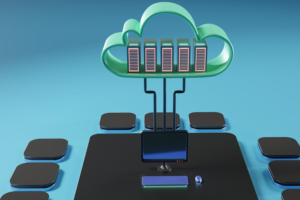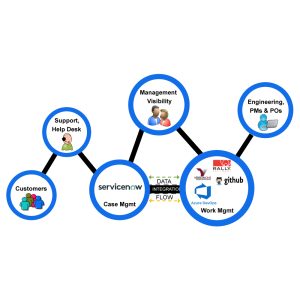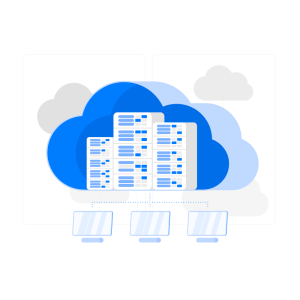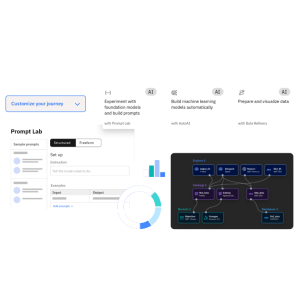As enterprises continue to embrace cloud-first, data-centric strategies, the demand for robust data pipeline automation tools has never been higher. Organizations need tools that can move, transform, and orchestrate data from diverse sources—at scale, in real time, and across hybrid environments.
Two of the most widely considered platforms in this space are IBM DataStage, part of the IBM InfoSphere ETL suite and integrated with IBM Cloud Pak for Data, and StreamSets, a modern platform known for its real-time data streaming and DevOps-friendly architecture.
In this comprehensive comparison, we explore the strengths, limitations, and best-fit scenarios for both tools to help you choose the right solution for your enterprise data integration needs.
1. What is Data Pipeline Automation?
Data pipeline automation refers to the process of automatically moving data from one system to another, transforming it as needed along the way, without manual intervention. This involves:
- Data ingestion from various sources (APIs, files, databases, etc.)
- ETL/ELT processing to clean, enrich, and transform data
- Scheduling & orchestration of workflows
- Monitoring & alerting for data quality and delivery
Modern data pipeline tools also support real-time data streaming, data lineage, and AI-assisted transformations to handle dynamic workloads in real-time business environments.
2. Overview of IBM DataStage
IBM DataStage is a mature, enterprise-grade ETL (Extract, Transform, Load) tool used to design, develop, and run complex data integration jobs. It is part of the IBM InfoSphere suite and now fully containerized within IBM Cloud Pak for Data.
Key Highlights:
- Supports both batch and real-time data integration
- Offers a visual drag-and-drop job designer
- Seamlessly connects with IBM and non-IBM systems
- Built-in support for data quality, cleansing, and governance
- In-memory parallel processing engine for high performance
- Native integration with DataOps and CI/CD pipelines
IBM DataStage is especially suited for enterprises needing robust, governed ETL pipelines and working within a hybrid cloud or on-premise IBM ecosystem.
3. Overview of StreamSets
StreamSets is a modern data integration platform optimized for real-time data streaming, pipeline monitoring, and DevOps automation. It supports a wide range of connectors and emphasizes ease of use for agile data engineers.
Key Highlights:
- Native support for real-time data ingestion and streaming analytics
- Flexible deployment: cloud-native, on-prem, or hybrid
- RESTful APIs and SDKs for pipeline-as-code
- Integrated monitoring, version control, and audit capabilities
- Intuitive web-based UI and low-code pipeline builder
StreamSets is ideal for organizations with real-time analytics requirements, microservices architectures, or those migrating to cloud-native, event-driven ecosystems.
4. Core Architecture Differences
| Component | IBM DataStage | StreamSets |
| Processing Engine | Parallel engine (multi-threaded batch + real-time) | Stream processing engine with edge-to-cloud scalability |
| Deployment Model | Kubernetes containers via IBM Cloud Pak | Cloud-native, on-premise, hybrid |
| Pipeline Type | ETL / ELT / batch / micro-batch / real-time | Streaming-first + batch support |
| Developer Paradigm | GUI + CLI + API-driven | GUI + Pipeline-as-code + REST APIs |
| Monitoring & Lineage | InfoSphere Governance Catalog + lineage tracing | Real-time monitoring with alerts and metrics |
5. Key Features Comparison
| Feature | IBM DataStage | StreamSets |
| Real-Time Streaming Support | Yes (via IBM Streams) | Native and primary feature |
| Cloud-Native Integration | Yes (via IBM Cloud Pak) | Yes |
| Low-Code Development | Yes (drag-and-drop UI) | Yes |
| Advanced Transformations | Extensive via built-in functions & rules | Moderate, user-defined via scripts |
| Data Quality Management | Integrated (QualityStage) | Basic rule-based alerts |
| Lineage & Governance | Strong via InfoSphere stack | Moderate via monitoring and logging |
| Connectors and APIs | 100+ prebuilt connectors | 50+ connectors with REST API extensions |
6. Use Case Scenarios
IBM DataStage:
- Regulated industries like banking, telecom, and healthcare
- Legacy system integration and mainframe modernization
- Batch-heavy or hybrid workloads with audit trails
- Complex enterprise data warehousing (EDW)
StreamSets:
- Real-time analytics for IoT, social media, or customer data
- Cloud migration and data lake ingestion pipelines
- Event-driven architecture and microservices
- Agile teams focused on DataOps and rapid iteration
7. Integration with IBM Cloud Pak
IBM DataStage is deeply integrated into IBM Cloud Pak for Data, offering:
- Unified governance with Watson Knowledge Catalog
- Shared metadata across tools (DataStage, Cognos, Watson Studio)
- Container-based scaling on Red Hat OpenShift
- Enhanced security, lineage, and auditing
While StreamSets can connect to IBM Cloud components, it’s not natively embedded into the Cloud Pak ecosystem, which may limit centralized governance and automation for IBM-centric environments.
8. Performance & Scalability
- IBM DataStage excels in large enterprise settings where performance tuning, parallel processing, and batch scalability are essential.
- StreamSets shines in elastic, real-time workloads where data velocity, event-handling, and latency are critical.
Both platforms offer robust scaling capabilities, but their performance benefits differ based on workload characteristics.
9. Pricing & Licensing Models
- IBM DataStage: Subscription-based or capacity-based pricing tied to IBM Cloud Pak; higher upfront cost but tailored for large-scale deployments.
- StreamSets: SaaS pricing with usage-based tiers; more affordable for smaller teams, especially for cloud-first or mid-market companies.
10. Security & Governance
| Security Feature | IBM DataStage | StreamSets |
| Role-Based Access Control | Yes | Yes |
| Data Encryption | At-rest & in-transit | At-rest & in-transit |
| Integration with IAM Tools | IBM Security tools, LDAP, Kerberos | SSO, LDAP, OIDC |
| Data Lineage | Deep lineage with InfoSphere | Basic through pipeline monitoring |
| Compliance & Auditing | Built-in GRC tools | Logging, audit trails |
11. Which Tool is Best for You?
| Business Need | Best Choice |
| Deep integration with IBM stack | IBM DataStage |
| Real-time data streaming | StreamSets |
| Enterprise-grade governance | IBM DataStage |
| Agile pipeline development | StreamSets |
| Batch + Real-time hybrid orchestration | IBM DataStage |
| Pipeline-as-code DevOps setup | StreamSets |
Making the Right Choice for Your Data Integration Strategy
Both IBM DataStage and StreamSets are excellent data pipeline automation platforms—but they cater to different enterprise needs.
- Choose IBM DataStage if your priority is governed, complex enterprise data integration and you’re already invested in the IBM ecosystem.
- Opt for StreamSets if you’re focused on real-time data streaming, agile development, and modern cloud-native architectures.
Enterprises often use both in parallel: DataStage for core ETL and compliance-driven workloads, and StreamSets for fast-moving streaming and cloud ingestion pipelines. At Nexright, we help clients architect, implement, and optimize their end-to-end data pipelines using IBM Cloud Pak for Integration: The Future of Intelligent Enterprise Connectivity, IBM DataStage, and complementary platforms like StreamSets.




